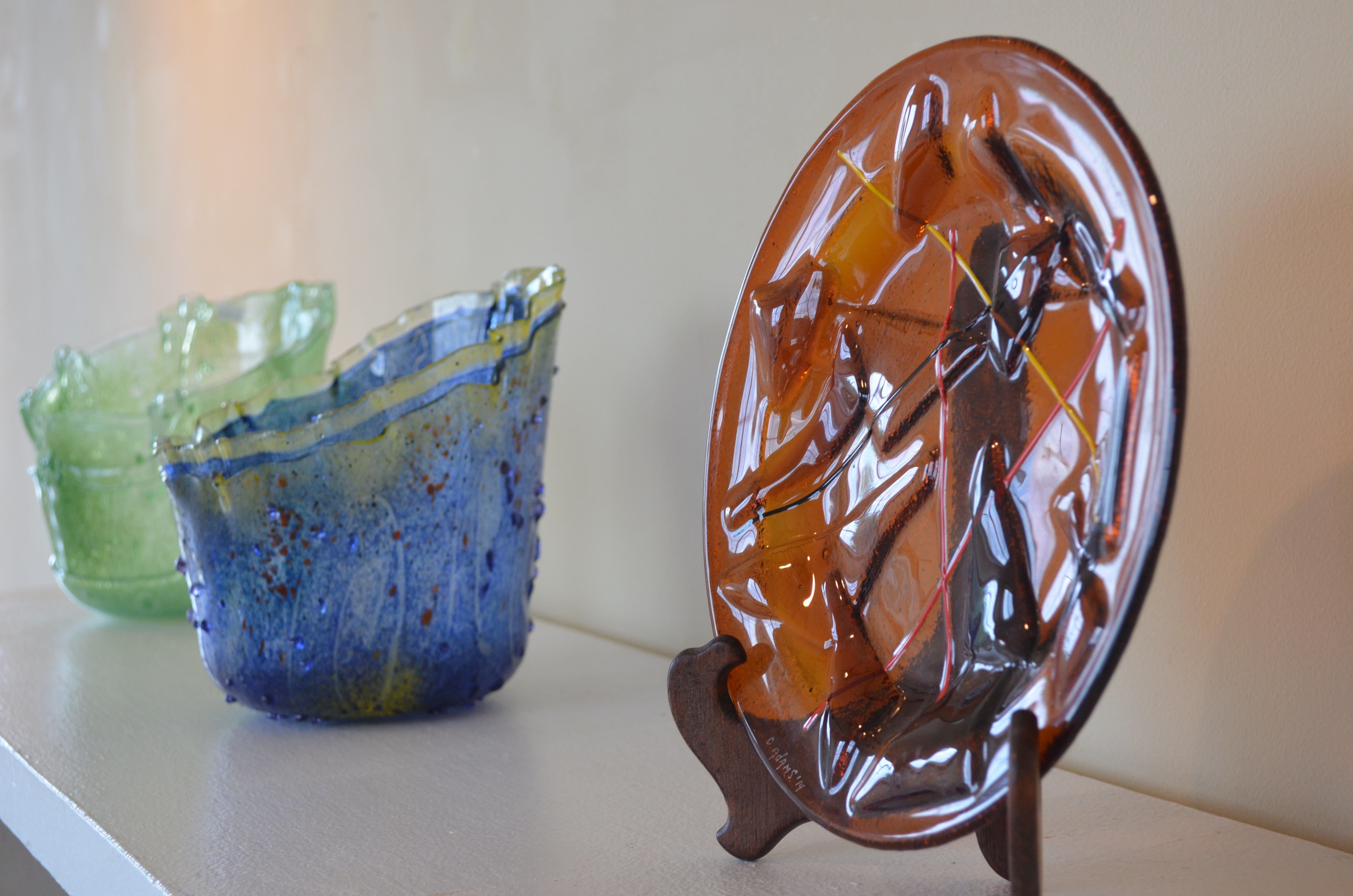New Johnson Center exhibit showcases artists’ careers in glass, ceramics
Published 10:06 pm Friday, August 7, 2020
|
Getting your Trinity Audio player ready...
|
The Johnson Center for the Arts proudly presents through October 3 TroyFest Best of Show 2019 Award Winner Charlies Adams and Tennessee Craft Fair Stand-Out Award Winner Guadalupe Lanning Robinson.
Brenda Campbell, JCA director, said Adams and Guadalupe are outstanding artists who have looked to their heritages for the artwork they create.
Campbell said what these artists bring to their work is a sense of yesterday in a contemporary world.
“We are excited to have these two artists who work in different mediums to create amazing art,” Campbell said. “These are exhibitions that you don’t want miss.”
Adams is a native of rural South Alabama while Guadalupe is a North Alabama transplant from Mexico.
Their roots are evident in their creations.
Charles Adams’s “Glass Through the Years, 1960-2020” takes JCA visitors through a visual journey from clay to glass while Guadalupe Lanning Robinsons’ “To Cotton from Clay” takes a backward look at her artistry.
Adams’ introduction to art was at Troy State College in the early 1960s when he took an art class taught by Ed Walter, who swas on loan to Troy State College from Florida State University.
“Back in the late 1950s and early 60s, clay was the main medium,” Adams said. “I made clay pots —slab pots, coil pots and pinch pots.
A little later, kiln-fired glass was becoming popular and Walter was a pioneer in the art. Under Walter’s tutelage, Adams’ name quickly became recognized with kiln fired glass.
Adams bought a kiln, set it up a studio in the chicken house.
One day, Adams was coming home and saw smoke billowing from his chicken house studio. The kiln had gotten too hot and the set dry the chicken house on fire and Adams was out of business.
That was around 1970 and Adams decided to venture into another medium. He invested $500 in learning how to make stained glass art.
“An artist from Albany, Georgia said she could teach me what I needed to know in a week’s time,” Adams said. “I made the investment, took my motor home to Albany, parked it in her yard and learned to make stained glass windows.”
Over the years, Charles Adams became highly recognized, not only for the stained-glass windows that he designed and installed in churches, but for glass art from sun catchers and bowls to windows and doors, from holiday pieces to commissioned pieces.
Then, one morning in December, it all went up in smoke.
A fire that started in the attic engulfed Adams Glass and destroyed Adams studio, his show work and then pieces that traced his history in the arts.
Standing looking the ashes, Adams, didn’t have the heart to start over again. But, with the encouragement of his son, David, and the support of his family, Adams Glass came back from the ashes.
“’m very honored to have a collection of my work at the Johnson Center that goes back to my roots in the arts,” Adams said. “I call it ‘in retrospect.’ I borrowed pieces from patrons to include with present work that will visually trace my work through the years. The show includes an early clay pot from the chicken house studio and pieces just out of the kiln.”
Guadalupe Lanning Robinson’s exhibition, “To Cotton From Clay” traces her work which originated in clay to her present-day work in quilts which was “an easy transition.”
The show features 18 clay pieces and seven quilts.
Guadalupe came to Huntsville in 1985, with her husband, whom she met in Mexico City. Her public studio is at Lowe Mill, which is a renovated textile mill that is home to a number of artists in the Huntsville area. Guadalupe’s work includes pottery and, more recently, quilts, thus “To Cotton from Clay.”
“Guadalupe” who was born in Mexico City, creates pottery adorned with hand-tooled designs made in geometric and organic patterns.
“When you see my work, even though all the designs are my own and are in some way contemporary, you can see my heritage,” Robinson said
Her work appears as though it was inspired by the ancients and that is her trademark.
For more than 30 years, Guadalupe has produced pottery that is readily distinctive.
“Most all of my work is wheel-thrown,” she said. “My pottery is very detailed. Very detailed. One piece can take up to three weeks to complete.”
Guadalupe said the work is tedious. The geometric and organic designs must be exact in duplication. Guadalupe is a master at duplication. Her work is so detailed and so exact that it might be thought to be out of one’s hands. But each piece is Guadalupe’s handiwork.
For her clay pieces, Guadalupe uses different colors of clay that she mixes and alters herself.
She sometimes adds food coloring or manganese to the clay. Doing so, infuses the piece with black specks that emphasize the clay texture.
Guadalupe is often asked how she contributes to a craft that has been going on for thousands.
“I want to contribute in a positive way,” she said. “I want to do something that’s going to bring joy to the person who has a piece of my pottery for a long time. I want to produce something that is lasting. And that is a challenge.”
Guadalupe said, although her work is challenging and is something that must be done in great detail, there is nothing she would rather do.
“I am so fortunate to be able to spend my time, doing this,” she said with a smile. “I am proud to have the opportunity to show my work at the Johnson Center for the Arts.”






